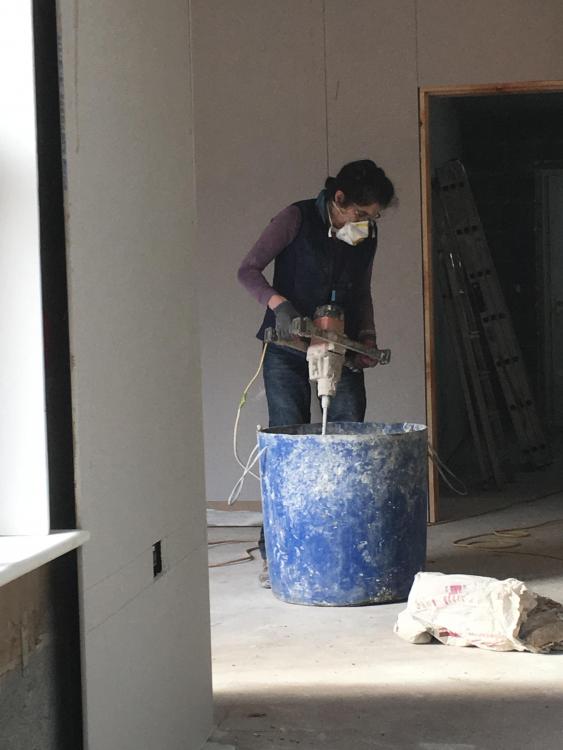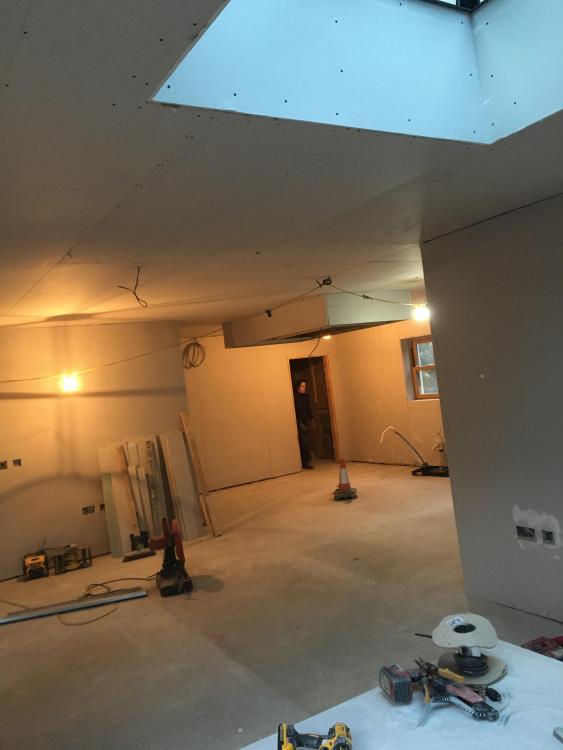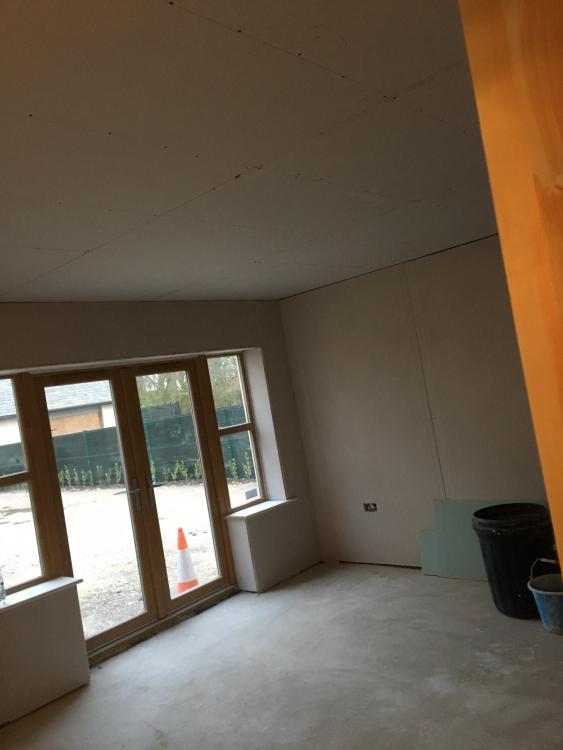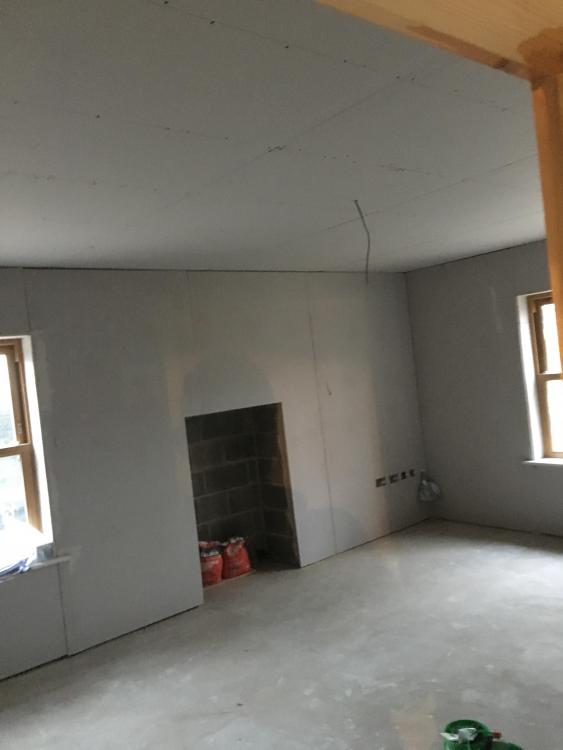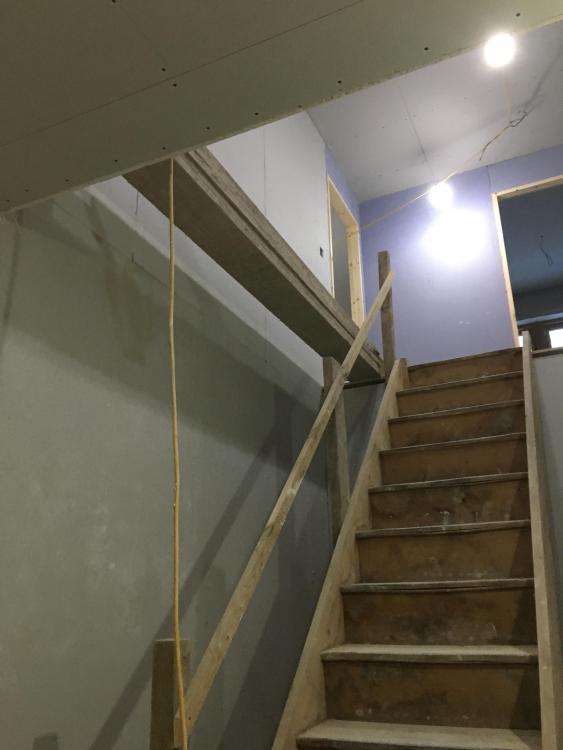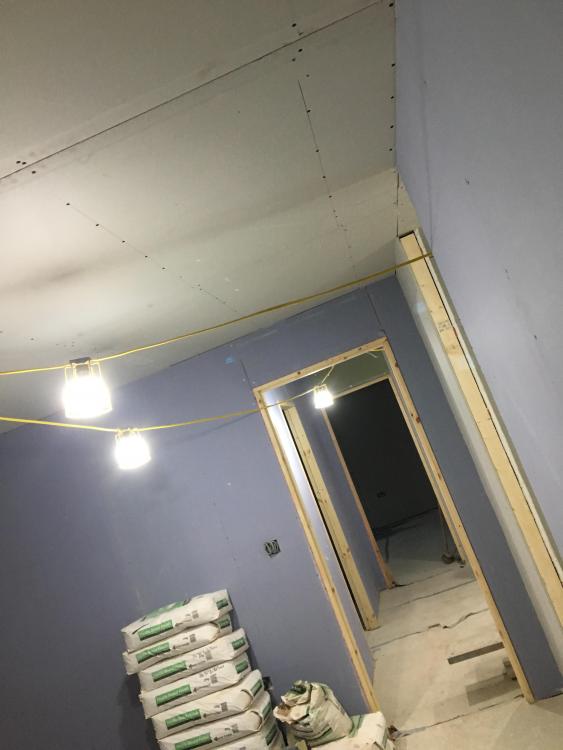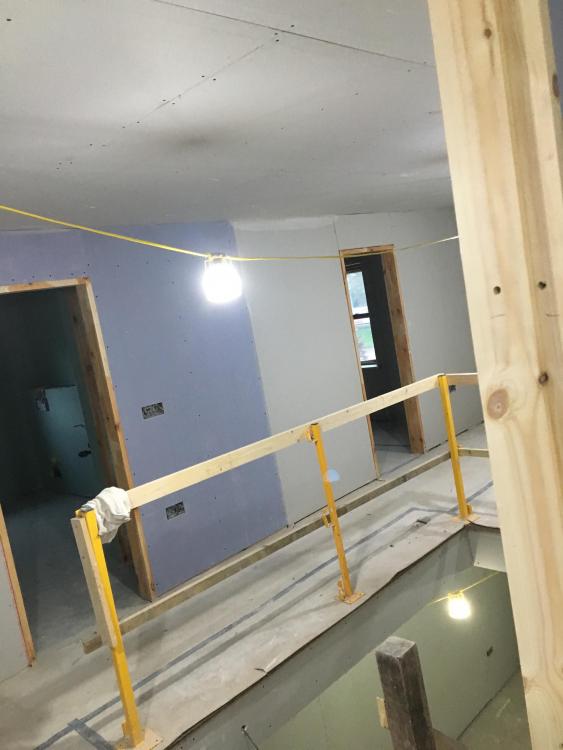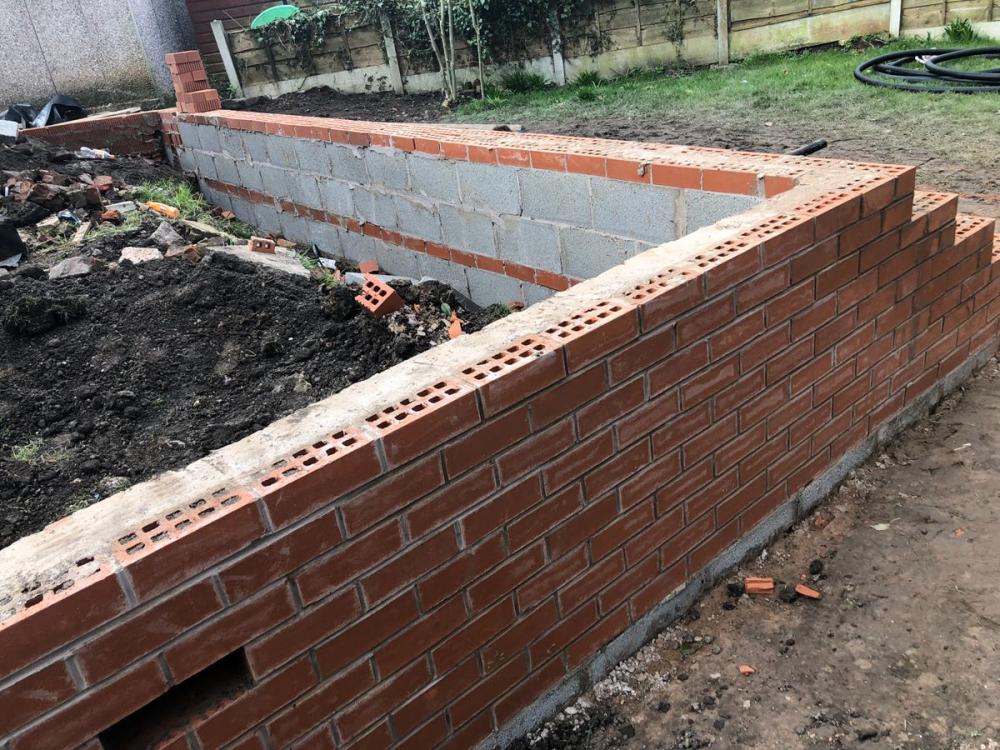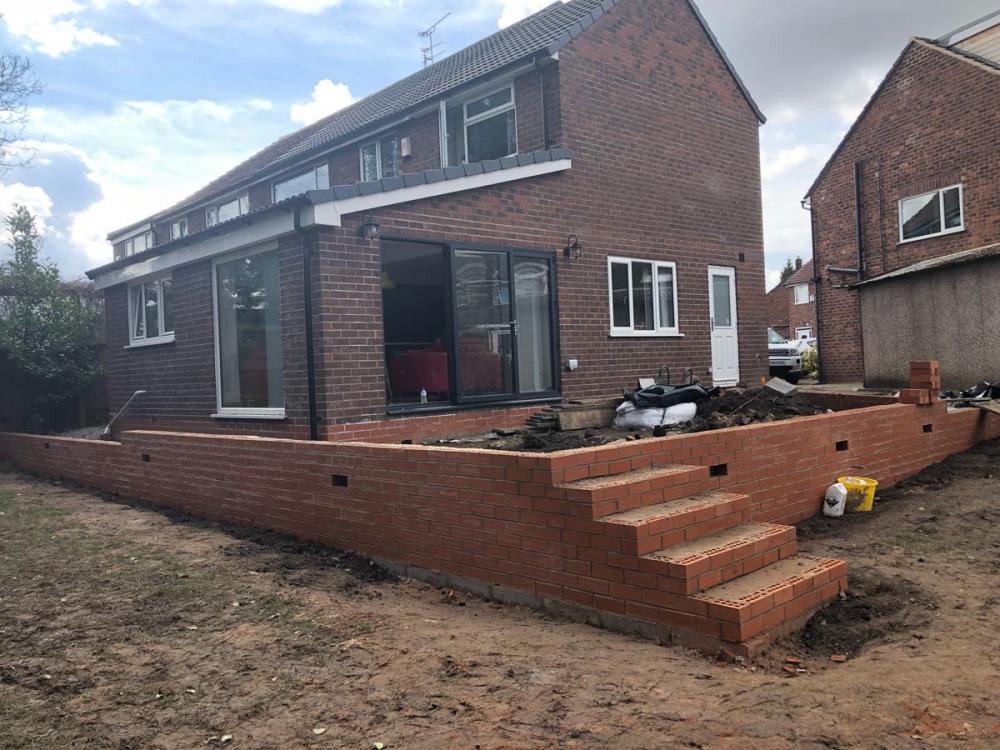Leaderboard
Popular Content
Showing content with the highest reputation on 04/01/18 in all areas
-
4 points
-
3 points
-
No, HMRC will reject any invoice with labour. The work should have been issued with Zero VAT and you will have to go back to your contractor for the VAT REFUND. It is not true that you cannot go back and obtain the wrongly charged VAT. HMRC informed me that it is illegal to incorrectly charge VAT and it's possible to take the contrcactor to the small claims curt to recover wrongly charge VAT..... We had two invoices rejected because they included clearly included labour but HMRC gave us clear wording to use when going back to the contractor for the VAT refund. The following gives the form of words we used to one of the contractors. I am in the process of reclaiming the VAT back for the Chandelier (under the DIY scheme - VAT431) - but HMRC has rejected your paperwork because ... ‘These invoices are invalid as the goods/services have been supplied and fitted or services have been provided in the course of construction of a new qualifying dwelling and no VAT should have been charged. Your supplier must correct the error. If the supplier still has any queries regarding the liability of their services or want to know what to do to make the necessary adjustment, they should contact the National Advice Service on 0300 200 3700. Ref: VAT431 NB Notes, Section 2 – VAT wrongly charged’ Please can I request that you review and amend these invoices to be zero rated for VAT – and refund the VAT that we’ve been charged on these invoices (£1064.60). To support this change I supply - The Certificate for zero-rated Building Works - The Completion Certificate If needed, I can supply the full letter from HMRC.3 points
-
Interesting mix that was! Smells like when you work with plastic. Pretty sticky! 5l bucket cement 7.5l bucket 10mm pea shingle 7.5l bucket sharp sand So 1 : 1.5 : 1.5 3:1 water to SBR A handful of fibres Repeat! Seemed to go in alright though: You can see the fall line: And from a distance how it falls overall. Not sure if it'll float when bit drier or even if it's necessary. Hoping the angle and flat steel plates will come off alright and not be stuck. Whatever, TF for thick tile adhesive!2 points
-
If it is a rental your gas safety certificate will tell you. There may be a facility at the Gas Safety Register website to check by address, but I am not sure.2 points
-
It fits with another point I've made elsewhere in the past, that's unrelated to H&S related issues. If you are going to project manage your own self-build you really do have to be on site very regularly, even if it's just for a half hour walk around and chat to whoever is working. Failing to do this is almost a near-certain way of ending up with problems, often not out of incompetence, but just from people "doing what they always do" rather than specifically what you want done. It's also a way of reminding people, perhaps gently, of the sort of fit and finish you're hoping for, as a way of helping to ensure things are done well. Tradespeople aren't mind readers, and although you may have the overall plan of what's going where later, they won't, so could very easily put things in the wrong, or an inconvenient, place just by accident.2 points
-
Perhaps I should keep records of ours. I read the generation meter a couple of weeks ago and it was around 23.4 MWh. System went live four years ago, and the estimate at the time was 6 MWh/year, so we seem to be about on target. In contrast, we've had the heating and hot water running 24/7 for two years, plus charging my car every weekday, and the total site consumption from the grid seems to be averaging around 2 MWh/year over the past couple of years. When we're finally moved in I reckon our grid consumption will probably be around the same, maybe less, as I won't be charging the car as much, and although I try and charge when we have an excess of generation, there are quite few days/weeks/months when that doesn't happen, so I'd guess that the car has used around 200 to 250 kWh/year from the grid, maybe more. I have a meter in the house that just records the house consumption, so everything that's fed from the grid to the consumer unit, which includes all the house-related stuff, like heating, hot water, ventilation, lighting etc. That's showing an annual consumption that's a bit less than the main meter, the annual average seems to be around 1550 kWh, or a bit under 12 kWh/m2, which is at least under the PH limit. It looks like the car and garage have upped consumption a fair bit (relatively......). That's probably reasonable, as there has been a fair bit of work going on in the garage during the build, plus all the power for things like the cement mixer, saws etc has been in there.1 point
-
In regards to outer cladding type, the reason I said block outer skin is that I found it very hard to get any reasonable insurance cover on a timber building. Im talking about tool and contents insurance, not building.1 point
-
The PD guidance is here, and worth a read: https://ecab.planningportal.co.uk/uploads/miniguides/outbuildings/Outbuildings.pdf Worth bearing in mind that if it's over 30m2 in floor area build regs will apply, and that may impact some of your design and construction decisions.1 point
-
You also need to keep walls below 2.5m too don’t you ..? I take it the plan is to maximize your PD rights..?1 point
-
11x8 is a big slab - even with a 30 degree roof and 2.4m walls you are talking a 4.7m ridge which is surely going to need planning permission ..?? That will dictate the materials and finish in reality.1 point
-
If you are keen on a timber frame why not just put on a low mantaince cladding direct on to thw timber frame. Saves putting up block work and finishing it of.1 point
-
The problem with using the blocks as an infil if not for the structural part is they don’t bring anything to the party, hardly any insulation value not waterproof, so you will still need to render the outside very little resistance to sound penetration why not timberframe just like a house, and block outer skin for security, insulation in the timber frame and OSB inner skin for racking and a good finish to hang tools and put up shelves. Raised tie trusses for roof so a little bit of storage, but also good headroom if working with timber.1 point
-
1 point
-
1 point
-
Surely if you lay them on their side they are only 100mm high (plus 10mm bed), not 225mm1 point
-
I'd not worry about it if it's that high up. The only time it will have anything other than a barely detectable flow will be when the system is on boost, and it's unlikely to be on boost when people are sleeping.1 point
-
Why not just use standard 6inch block on its side, that's what we done with a 8x6 garage with a room upstairs and 45 degree slate roof.1 point
-
The problem I found with single skin block is it’s not structurally strong enough without piers, so you end up with a non flat wall inside, so fitting workbenches or shelves is a pain, i did build a very nice workshop in single skin, but I used a block made by durox in 180mm wide, nice flat interior walls. You could then install insulation later.1 point
-
Ask him to amend the invoice. You won't get the VAT back at the end. Generally if you hire plant without a labour/operator it's standard rated (and no claim at the end) If you hire plant with labour/operator should be zero rated for a new build.1 point
-
1 point
-
How about those factory seconds sip panels, i think the thing to ask is what is this building for ? if just to keep the car in then there is no need to insulate if it is to be a workshop or man cave then I would want to have a good level of insulation, i think you need to come to a conclusion on the finished product to then work out how to achieve it.1 point
-
Having spent the summer months pottering in the garden, and generally ignoring the list of outstanding things to do inside, I finally summoned enough motivation to get things finished off. Fortunately, the list was fairly short so once started, was completed in a reasonable timescale. In the kitchen we tiled the splashback, fitted a decor panel underneath the bridging units (rather than having to see the underside of the units) and fitted a breakfast bar. Picking the tiles was probably the most challenging part, but we finally found something we both liked and agreed upon, and seems to work pretty well as a contrast to the units and worktop, as well as matching the colour scheme of the wider room. The decor panel has nicely finished off the underside of the bridging units. Ideally, this would have been done at the time the kitchen was fitted, and although was something I raised in the kitchen showroom, it was decided that it wasn't required... The breakfast bar was formed from 450mm deep lengths of worktop, the uprights specified as shelves so they were finished on all sides. A very simple construction secured to the back of the island by means of small brackets to a batten, and fix-all to the wall and floor. The height is set at 1000mm, which although taller than a standard breakfast bar, does give more leg room when sitting at it. I have to admit I wasn't keen on the idea of a breakfast bar, but have been won over, and it is a really usable addition to the room, primarily as a place to sit and chat when someone is working in the kitchen. I think solid oak worktop would have been preferable, but the final choice was down to asthetics, and again colour contrast was desired. In the utility room, I built a bench / shoe storage. A very simple but sturdy construction, I used oak worktop off-cuts for the uprights, and formed the shelf and top, using off-cuts from our oak door frames and door stops, glued to an off-cut of plyboard, all finished with Osmo. From a cost point of view, the materials were all free as they were scrap. The only cost was my time, a little wood glue and a few sanding pads for the orbital sander. Having built the bench, I had a couple of pieces of oak worktop left which I used to make a couple of little side tables. I had intended these to be only temporary, but like them so much that I plan to keep using them rather than replacing them. Elsewhere we had a couple more spots on our oak floor where it hadn't bonded to the slab. These only became apparent as we moved furniture around. I've previously relayed the reasons for this issue so won't repeat them. We used the same method of 'repair' using this product: http://www.fixafloor.co.uk/ but instead of drilling a larger hole and using a plug of timber flooring to finish, I drilled a hole of 4.5mm, injected the adhesive, then once cured 24 hours later, finished the drill hole flush using melted furniture repair wax. This in my view is a better method of finshing, looks less intrusive and was less time consuming compared to plugging. See below for comparison pictures. Filling all the nailheads on our oak skirtings and facings was not a task I was looking forward to, but in the end only took a couple of hours. Using a tip I picked up many years ago from a decorator, I used linseed putty, mixing 50/50 some natural and mahogany coloured putty for a final filler that was pretty well matched to our oak. Very easy to use, the putty remains flexible with the only finishing required being a wipe over the filled area with a dry cloth to remove any reside. Other than that, it's been settling into a routine of annual maintenance - servicing our MVHR (filters and cleaning the core), renewing the white silicone in our showers and servicing the treatment plant air pump. Next entry - Heating and DHW - How our ASHP based system has performed over the last 12 months.1 point
-
That’s what the insurance company were going to do in this case I believe (as in pay a small sum and avoid court action), and given that the individual wasn’t able to prove any official earnings in his loss of earnings claim I rather suspect it was a couple of grand. They told me early on that they didn’t expect it to reach the court, even though we were served with papers. In the beginning the scaffolding company offered to pay the guy loss of earnings for a few weeks while he recovered but he wanted too much money so it never happened. I rather suspect that he could have got more than he eventually would end up with if he had accepted their offer, and wouldn’t have needed to wait years for it. That information was all verbal however and whilst I told the solicitor that in my view this was evidence of the scaffolding company assuming liability there wasn’t anything in writing so couldn’t be used.1 point
-
Price a shed kit from one of the many suppliers, you might find it isn't as dear as you expect.1 point
-
Welcome. What's the spec of the slab? In particular, if using a construction method that is going to put point loads on to areas of the slab around the periphery, like a steel portal frame, are you confident that the slab will take those point loads? Block walls would spread the load more evenly around the edge of the slab, but it'd still be useful to know the slab specification, just to be sure that the edges are OK for the load that's going to be imposed.1 point
-
The bottom line with H&S is that the person doing the work has to be content that their way of working is OK. The law uses the "reasonable" test here, and that is not clearly defined, but if it ended up in court it would be the classic case of "was an action deemed reasonable in the view of the man on the Clapham omnibus?". This test of reasonableness has been around for a very long time, and is used very regularly in and out of court. Accidents do happen where no one can reasonably be expected to take all, or part of, the blame. A court would, in all probability, say that a daily safety inspection by someone competent would be "reasonable" - it would be unreasonable, for example, to expect hourly scaffold checks. There is an onus on every individual to check the area in which they are going to be working to make sure it's safe, specifically to pick up on the fact that no one would reasonably expect any supervisor or inspector to do very frequent checks, unless there was a reasonable expectation that safety conditions were likely to quickly change. It's a subject that comes up time and time again in the sort of part time consultancy work I do. The classic, and very common, case is when a passenger in a small aircraft suffers an injury in an accident and the pilot is sued. Inevitably the pilot's insurer will seek to obtain as much evidence as possible about both the cause of the accident and the actions the pilot and passenger took before it. For example, I dealt with one case where the accident was caused by unforeseeable bad weather. I was able to show that several other aircraft in the area had been caught out by the same unusual conditions that day, and the pilots of those aircraft gave statements that they had done their usual met checks (as had the pilot of the aircraft that was involved in the accident). Both my view, and that of the AAIB, was that the cause of the accident was the unforecast weather conditions that prevailed very locally at the time. The AAIB cannot, and will not, attribute, or even hint at, blame, so their evidence isn't often used; normally their report would be submitted as supporting written evidence. My report to the insurer was that, my opinion, having looked in detail at the accident cause, visited the site, interviewed several witnesses (including the pilot, passenger and other pilots at the same club on that day) was that the pilot had acted reasonably, and done everything he could have reasonably been expected to do in order to have avoided the accident, under the circumstances that prevailed at the time. The eventual agreement was that the pilot was not considered to be liable, but it never went to court (such cases very rarely ever do) and so I strongly suspect that the insurer made a modest settlement payment to the passenger. Given they had paid me a few thousand for an opinion, I doubt they would have quibbled over doing something similar with the claimant, if only to avoid the high costs of going to court.1 point
-
Must admit it was quite satisfying making them from all the odd bits I had left over. I'm hoping to acquire a few off-cuts of beech worktop from a friend so may well have another table or two in time. As for being a fraud, what can I say...good communication and attention to detail meant a lot of the usual snags (or snags I have seen in the past) were avoided.1 point
-
Building the fitted wardrobes may be delayed for a few hours My wife has just shown me a picture in Lancashire life and asked if I could alter the lighting coffer over the kitchen Island So I’ve just to take it down slightly At least I hadn’t finished building it up Again that the beauty of MF as aposed to Timber Ive also moved the bathroom walls three times now One is back were we started Deep breaths1 point
-
1 point
-
Wow that looks great, far better boarding than we got from our ‘professionals’! Well done.1 point
-
1 point
-
Yes I have Russel Ive used MF studying to form the bathrooms and ceiling coffer A lot straighter than timber Better sound insulation and quiker I’ve three built in wardrobes to do today Two hours for all three Millinetre perfect1 point
-
Within range for you if it comes to piles; https://www.minipilingsystems.co.uk/contact-us/ and https://www.suttles.co.uk/suttle-piling/ I dealt with both but went with Suttles...nothing in it on price except they were more open minded on the spec of the piling mat which saved me loads of ancillary hassle and cost. A fair chunk of the cost is on 'mobilisation' of their kit so although its 'only' the orange areas that need piling i'd suspect it'll be the more costly option.1 point
-
The woods were full of people who had got there early and were camping. There was a cornfield next to the arena, and many used that instead of the official arrangements. I remember the field well, as on the afternoon that Quintessance were playing, I wandered off there for a pee, and came across a girl called Poppy. I would guess we were both "under the influence of pharmaceutical products", as I remember her wandering over to me, smiling, and suggesting that we explore "horizontal metaphysics". It was probably the second most amazing thing about the festival, with Barclay James Harvest, complete with a full classical orchestra on stage, playing at sunset being the most absolutely amazing experience. I still have their album I bought as soon as I got back from Weeley. I never saw Poppy again, and have no recollection of us talking at all. We just wandered off, smiling at each other, afterwards, in search of the next amazing experience.1 point
-
Yeah but you were rushing to get to the pub! Looks great btw!1 point
-
1 point
-
Last weekend we had the structural engineer out checking the ground. Having dug the pits the structural engineer has confirmed that the ground is suitable for building on1 point
-
Just tell me that the decking is all ready to take these lamps and the wiring is also done and that it will all be done by the weekend. IE not some lamps for the future projects box.1 point
This leaderboard is set to London/GMT+01:00


